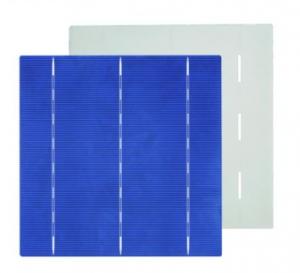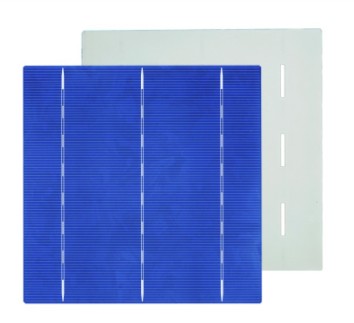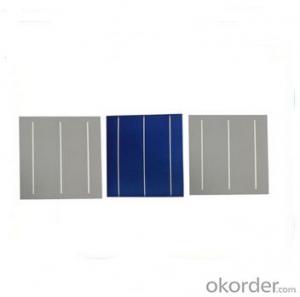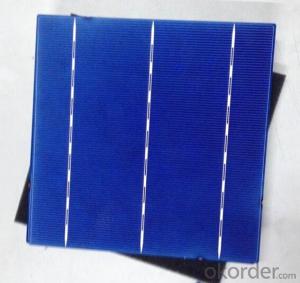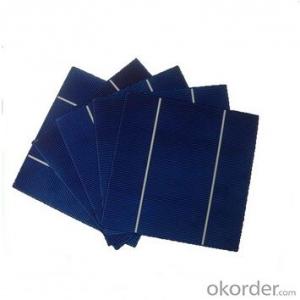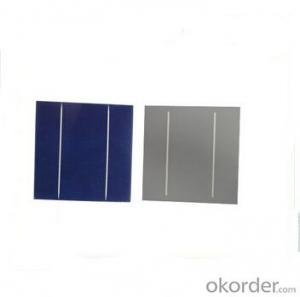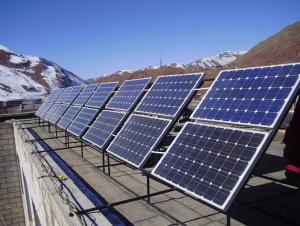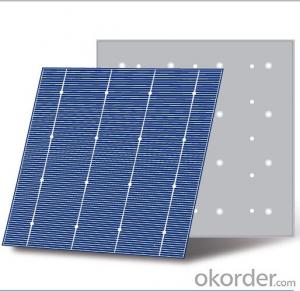Solar Cells in Glass - Poly-Crystalline Solar Cell 156mm with Excellent Conversion Efficiency and Weak Light Performance
- Loading Port:
- Tianjin
- Payment Terms:
- TT or LC
- Min Order Qty:
- 10 watt
- Supply Capability:
- 500 watt/month
OKorder Service Pledge
OKorder Financial Service
You Might Also Like
Guaranteed by refinement solar cell producing process, up to 18.1% efficiency for mass production of CSG-MM156 series cells, up to 18.5% for the highest efficiency, up to 265W (6×10 Series) for module output max power;
Better shortwave response ensured by Selective Emitter Technology;
Better continuousness of fingers and stable performance ensured by Double Printing Technology;
Whole-process inspection from wafer input to cell packaging, to ensure high quality and excellent performance;
Production and Quality Control
CSG fully integrated PV chain from silicon materials, ingot, wafer, solar cell to solar module, and well-established QC management system, to guarantee consistency of high quality;
Mature technical control and strict sorting standard, to ensure consistency and reliability of solar cell;
Completely careful operation during production to avoid micro-cracks and reduce breakage rates during module assembly;
Electrical Properties
Mature crystalline cells manufacturing technology and complete quality control system, to ensure excellent electrical stability;
Lower module encapsulation loss realized by reasonable electrical characteristics setting, including high voltage and low current, high parallel resistance and low series resistance, classification with precise current classes, and positive power tolerance;
Excellent conversion efficiency, weak light performance and shortwave response guaranteed by leading R&D innovation system;
Recommend Welding Technique
Welding:tin-coated copper ribbons, coated with 20-25μm thickness (64%Sn,36%Pb)
Applications of Solar Cell Products
1.Fields of Aerospace, Space development and Space-tech.
Solar cells products first to show their talents in space technology because of its reliability and unique superiority. 1958 Solar first landed on satellites. Thus aerospace, satellites have not been away from the solar cell; the development of future space, the first month of the solar cell kicking will play an important role. It landed on other planets, the current Mars rover "Spirit", "Opportunity" solar cells on which they work is the main power supply.
2. Application of industrial and agricultural production.
Solar cell products have also been widely used in the industrial and agricultural as a new energy. In scattershot interpersonal mountain sea, a variety of lighthouse beacon, a variety of satellite communication station; a variety of remote sensing, meteorological station, road and rail automatic lights have become the preferred power source.
In many remote areas without electricity-grid, photovoltaic power supply system is widely used too.
Photocell gets a lot of applications in automatic control, such as the measurements of seized and number for the plant products; production of various types of sensors; photocell various wavelengths (colors) in response to different sensitivity (or stamped filter) of the probe light color.
Solar cell products are also the professional solar power of Transportation, communications, forestry, agriculture, television, meteorology, geology and other.
3. Small civilian life products
Solar cell products have lots of small product range, under various names currently.
(1) Small-scale photovoltaic system class:
Solar charger: cases can give two AA nickel-cadmium battery, or do a small 3V power supply.
Solar Calculator: portable pocket calculator to do the power supply, there is light can work.
Solar hood: use a small fan to automatically adjust the sun, summer is cool to take the absolute best.
Solar portable lights: solar battery charging, energy storage batteries, particularly suitable for areas without electricity and mobile use.
(2) Many variety of electrical equipment and backup power.
- Q: How do solar cells perform in areas with high levels of water pollution?
- Solar cells may be adversely affected in areas with high levels of water pollution. The presence of pollutants, such as chemicals or particles, in the water can reduce the amount of sunlight reaching the solar cells, thereby decreasing their efficiency. Additionally, water pollution can lead to the accumulation of dirt, debris, or algae on the surface of the solar panels, further diminishing their performance. Regular cleaning and maintenance are essential in such areas to ensure optimal functioning of solar cells.
- Q: Can solar cells be used for powering outdoor surveillance systems?
- Yes, solar cells can be effectively used for powering outdoor surveillance systems. Solar cells convert sunlight into electricity, providing a reliable and sustainable source of power for surveillance cameras, sensors, and other surveillance system components. This eliminates the need for conventional power sources and reduces the costs associated with connecting to the electrical grid. Additionally, solar-powered surveillance systems can be easily installed in remote or off-grid locations, making them highly flexible and efficient for outdoor surveillance applications.
- Q: Can solar cells be used for powering remote sensors?
- Yes, solar cells can be used for powering remote sensors. Solar cells convert sunlight into electricity, making them an ideal power source for remote sensors in locations where access to a power grid is limited or non-existent. This enables continuous operation of the sensors without the need for frequent battery replacements, making solar cells an efficient and sustainable solution for powering remote sensors.
- Q: Can solar cells be used in residential communities?
- Yes, solar cells can be used in residential communities. In fact, they are increasingly being adopted by homeowners and communities as a sustainable and cost-effective energy source. Solar panels installed on rooftops or in shared spaces can generate electricity by converting sunlight into usable energy, helping to reduce reliance on traditional power grids and lowering electricity bills.
- Q: What is the impact of solar cells on reducing greenhouse gas emissions?
- Solar cells have a significant impact on reducing greenhouse gas emissions as they generate electricity from renewable sources, primarily the sun, without emitting any harmful greenhouse gases. By replacing traditional fossil fuel-based power generation, solar cells help to mitigate climate change by reducing carbon dioxide and other greenhouse gas emissions, contributing to a cleaner and more sustainable energy future.
- Q: How do solar cells perform in areas with high levels of radiation?
- Solar cells actually perform better in areas with high levels of radiation. This is because higher radiation levels provide more sunlight, which is the primary source of energy for solar cells. As a result, solar cells in areas with high radiation can generate more electricity and have increased efficiency compared to areas with lower radiation levels.
- Q: What is the lifespan of solar cells?
- The lifespan of solar cells can vary depending on various factors such as the type and quality of the cells, their usage and maintenance, and the overall conditions they are exposed to. However, on average, solar cells have a lifespan of around 25 to 30 years.
- Q: Can solar cells be used in clothing?
- Yes, solar cells can be integrated into clothing to generate electricity from sunlight.
- Q: Can solar cells be used on road surfaces?
- Yes, solar cells can be used on road surfaces. Solar road technology, also known as solar roadways, involves embedding solar panels into roadways to generate electricity. These solar panels are designed to withstand the weight of vehicles and can be used to power streetlights, traffic signals, and even electric vehicles. However, there are challenges to overcome, such as durability and cost-effectiveness, before widespread implementation can occur.
- Q: Can solar cells be used for powering remote research stations in Antarctica?
- Yes, solar cells can be used for powering remote research stations in Antarctica. Solar energy is a renewable and sustainable source of power, making it an ideal choice for off-grid locations such as Antarctica. With advancements in technology, solar panels can efficiently generate electricity even in extreme cold conditions, making them a reliable source of energy for remote research stations in Antarctica.
Send your message to us
Solar Cells in Glass - Poly-Crystalline Solar Cell 156mm with Excellent Conversion Efficiency and Weak Light Performance
- Loading Port:
- Tianjin
- Payment Terms:
- TT or LC
- Min Order Qty:
- 10 watt
- Supply Capability:
- 500 watt/month
OKorder Service Pledge
OKorder Financial Service
Similar products
Hot products
Hot Searches
Related keywords
